|
AN HISTORICAL OUTLINE
OF THE
CATHEDRAL CHURCH
OF SAINT
ENNODIUS AND SAINT VERONICA
AT WENCHOSTER
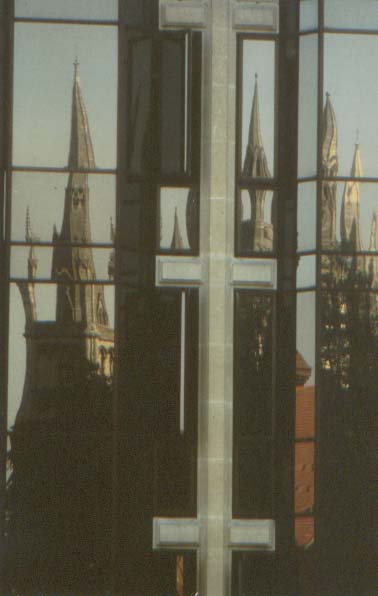

THE NAME OF WENCHOSTER
"The Romans
occupied Britain for some four centuries, yet the names they gave to
their towns have been supplanted. We all know that castra means a
camp, and can recognise Winchester. Gloucester, Doncaster, Caister
and Wroxeter as Roman stations; but to the romanised Britons these
were Venta Bulgarium, Glevum, Danum, Venta Icenorum and Viroconium
and the present names all derive from the Old English ceaster, a
word borrowed from the Latin. There are so many of these names
ending in variations of -chester that the English must have given
them to almost any site on which fortifications were found,
sometimes, no doubt, to places strengthened before the Romans came."
England and Wales A Traveller's Companion.
Arnold Fellows. Oxford University Press. 1964. pp. 62-63.
So to Wenchoster,
and Wen-ceaster meaning a fortified place on the wen
or bend of the river, and certainly the cathedral occupies a
promontory of low-lying land around which the sluggish Wen still
flows, but to the Romans, the place was Venta Codpiecium,
meaning a place where the air stank of fish. Until the 17th
century the tidal estuary into which the Wen flows still allowed a
substantial fishing industry along the banks of the river, and for a
time in the 1760's the southern transept of the cathedral was used
for mending nets and salting trout.
TIMELINE










THE ROMAN HERITAGE
Excavations into
the foundations of the cathedral carried out during the summer of
1935 uncovered fragments of distinctive Samian-ware pottery dating
from the third century AD, mostly from wine jars, one piece still
bearing a potters mark from Gaul, and part of the legend "ABSQUE
VINO NIHIL" roughly translated as "Without wine nothing is
gained". Also discovered were several post-holes indicating that
there was an Iron Age settlement already here before the army of
General Septimus Thrustus encamped by the ford in about AD 109.
Indications of a substantial Roman residence were discovered beneath
the tiled floor of the Mandylion chapel during renovations in 1972,
and work on the septic drains underneath the Nave floor in 1975
uncovered the remains of massive stone pillars which dated the
construction of the earliest Cathedral on the site to around the
year AD 897.
THE
SAXON & NORMAN FOUNDATION
This first church is mentioned in the Anglo-Saxon Chronicle written
by Herphastus, the dancing monk of Trickling Down (which monastery
was dissolved by Richard II in 1485 after the Battle of Wenchoster
Plain due to the monks' coddling of the enemy archers), who states
that this Cathedral dedicated to Saint Mary was begun by Bishop
Crastin Poque and dedicated on the Feast of Saint Decumen in the
fifth year of his consecration. The Chronicle records that that the
building of the initial Chapel commenced in about the year AD 909,
but disaster soon struck. Being constructed on marshland this
chapel, when it was enlarged, had serious flaws in its foundations,
and on August 10th, AD 1001, just after Terce, the south
wall disintegrated into the bog, taking with it the rest of the
building and 31 monks.
Reconstruction was
begun in 1014 by Bishop Hardwithus Goodwin. This second cathedral
caught fire in 1150 and the remaining walls, apart from the new
South Transept which appears to have had its foundations on the only
piece of rock in the area, once again fell into the marsh.
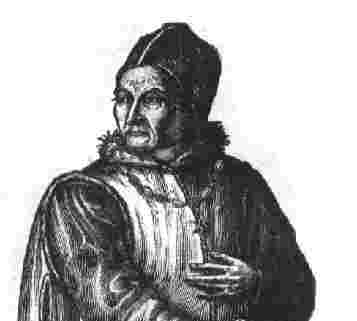
Bishop John de
Wicken
In 1151 the third
cathedral was begun, and completed in 1204, being dedicated to Saint
Ennodius the Unreliable by Bishop John de Wicken on Ascension Day
that year. Over 3,000 skilled labourers were employed during its
construction, and a surviving fragment of an artisan's bill notes
that the sum of 40 shillings was paid for the carving of 8 stone
heads to decorate the west front, along with 2 groats to the basin
boy for services rendered. A broken sentence referring to sheep and
new boots remains a puzzle, though possibly it is a record of the
provision of food and clothing for the workforce.
THE
MIDDLE AGES AND THE HOLY RELIC
The arrival at the cathedral, in 1206, of the relic of Saint
Veronica is also well documented. The Wenchoster Chronicles,
(compiled in 1490 under the direction of Bishop Augustus of Whyp),
tell that it was the gift of Baron de Boeuf, who brought it back
from his final crusade to the Holy Land. A mere three months after
its arrival, a community of itinerant Carmelite monks arrived in
Wenchoster from France, attracted by the famous Mandylion. Under the
patronage of Guy, Ponce de Rouen, they made their home in simple
accommodation, the Cottage, outside the wooden De Flageolet Tower,
and entered the church each day to attend mass and pray before the
sacred icons. Guy stayed in a nearby village.
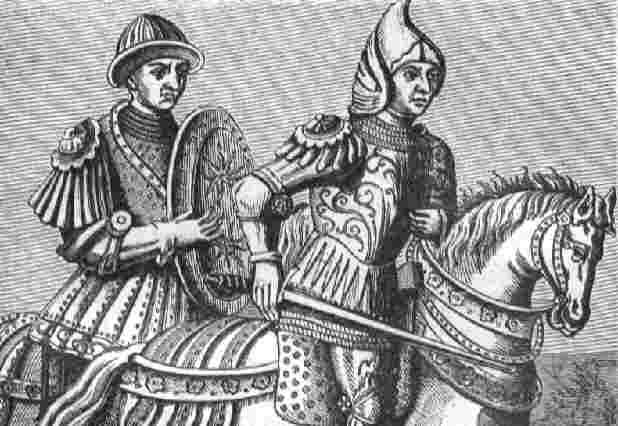
Baron de Boeuf and
his minstrel Effete (holding giant tambourine), from a 15th
century manuscript
The Bishop of
Wenchoster, John de Wicken, decided to invite the pilgrims into the
Close, and after long deliberations, and the handing over of an
unrecorded sum of money and a brace of ferrets, it was decided that
the monks could establish a centre of learning and discipline at the
Cathedral.
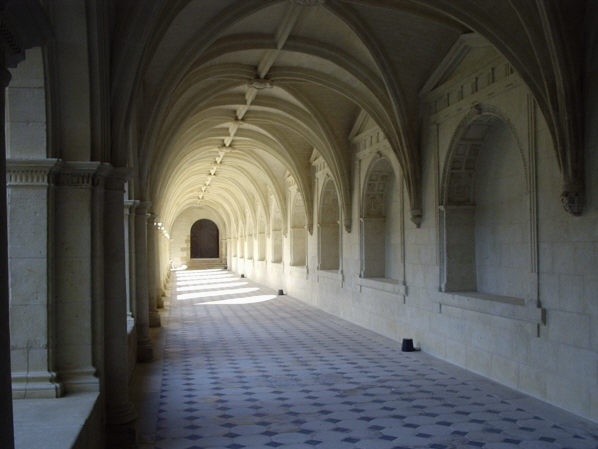
The cloisters were
then constructed adjacent to the south wall of the Cathedral as a
place where the monks could study, yet interrupt their work to
attend the daily offices and mass in the church. Built of sandstone,
they were unique among the cloisters of the time by incorporating
private urinals adjacent to the study desks. A narrow gate led from
the darkness of the cloisters (lit only by tallow candles after
Tenebrae) and to the inner garden. Here the monks could compare
manuscripts, discuss the latest copying techniques, simply dally and
exchange gossip and collects, and eventually be buried. The garden
would be planted with large shrubs to ensure a degree of privacy.
The monks
initially nailed the sacred napkin to the wall of the Lady Chapel,
and it was Bishop John (1173 - 1209) who in 1207 re-dedicated the
area as the Mandylion Chapel. The following year the Pope granted
the application from the Bishop that the cathedral be permitted the
additional dedication to Saint Veronica. In 1210, following
instructions by the new Bishop, Hardrada Dogbreath (1209-1235), the
napkin had been taken down, folded, and reverently placed beneath
the altar in a casket banded with bronze and gold.
Life at the
Cathedral during the Black Death of the 14th century was
not without its difficulties. The fragmented Annals of the period
record that in the space of 15 weeks over half of the resident
monastic population succumbed to the disease, an illness described
by the scribe, Brother Wynde, as
"that bulbous sickness, which dothe create great explosion of the
bowels and swellynges of the pits." At the first sign of the
infection amongst the community the Bishop, Felkin Goatnadger,
removed himself to the Nunnery at Shaston Farthing, where he
remained until the winter of 1351-52, returning with much pomp, and
several young children, to the Cathedral on the Feast of Saints
Timothy and Titus (January 26th).
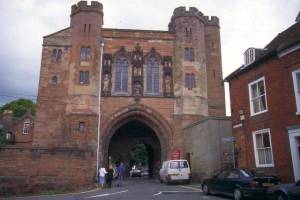
The imposing
Canonry (so-called since 1802) which dominates the entrance to the
Cathedral Close, was built in 1399 by the de Flageolet family of
Broad Fingerling to replace the earlier wooden tower and the
adjacent Cottage. Its sandstone façade bears the marks of centuries
of witness to the faith, and in its original form would have been a
splendid gateway indeed, through which pilgrims would pass on their
way to venerate the famous Mandylion of Wenchoster.
Around the main
windows of the de Flageolet Stump (as it was initially called) are
numerous niches, designed originally to house icons of the saints
peculiar to this Cathedral. The two large niches flanking the
windows are, of course, for St Ennodius and St Veronica, but two
smaller spaces remain between the windows. There is controversy over
what icons first stood here, but Cathedral scholars now believe that
one was for St. Josephat of the Fens (820-891) who in his earthly
life had lived a life of witness, preaching and baptizing in the
ditches of East Anglia. He was later canonized when it was
discovered that his bones, when ground into paste, were able to cure
the monarch’s son, Prince Aethelred the Unsteady, from a rare type
of French wart.
The second niche
is thought to have displayed a small statue of Our Lady of Thropping.
On the eve of St. Maurice, 909, two young girls returning from the
fields in the hamlet of Thropping*(1) claimed to have had a vision
of the Virgin Mary standing on a tussock, "bare stomaked", and
pointing to a nearby field. They went at once and told the
parish priest of what they had seen, and he promptly persuaded
Bishop Crastin Poque to purchase this large tract of unfertile land
and boggy land which he had inherited the previous year. And so the
initial Cathedral came to be built.
When first
constructed the Canonry served as a defensive gate for the Cathedral
- keeping the laity out during celebrations of the mass. Eventually
however a succession of Deans came to realize that this was not in
keeping with the general tones of the faith. The gates were thus
opened during the hours of daylight, and the building became the
home of the Close Serjeant-at-Arms.
THE
REFORMATION
The Reformation during the reign of Henry VIII brought the earnest
monastic study at the cathedral to a close, and the Carmelite
brothers went into hiding on an island off the west coast of England
where they practiced animal husbandry. Under Mary Tudor, Wenchoster
became the base of operations for Matthew Anuss, the Witchfinder's
Assistant, and some two dozen local inhabitants were burnt at the
stake in the Market Place. Several clerics from the cathedral were
also indicted and tried, but none were convicted, due, it is said by
local historians, to the interjection of one Mother Liplust, an old
crone who lived out on the marshes in a tumbledown cottage, with
only four cats and a donkey for company. Despite the relaxation of
persecution under Elizabeth I, parts of the cathedral, including the
monastic cloisters, lay bare for two centuries, used as little more
than a storage space for sacramental wine and larger processional
crosses, and eventually fell into disrepair.
THE CIVIL WAR AND THE COMMONWEALTH
On the outbreak of Civil War in 1642, Wenchoster declared for the
King, and for a time enjoyed the security offered by "The Queen's
Own Troop" which was barracked in the Market Square. In 1644,
following the defeat of the Royalist forces at the Battle of
Nantwich (January 25th), the "Queen's"
left for Oxford, and a division of the New Model Army under the
command of Sir. Jorrocks Spleen, lay siege to the city. After 5
weeks the citizens persuaded the Mayor to offer surrender, and on
April 9th, Cromwell's army entered the streets. Making
straight for the cathedral, a bunch of drunken soldiers hammered on
the West door, forcing their way past the Serjeant-at-Arms, one
Ulrich Festal, dealing him a nasty blow on the coddling piece with a
blunt nadger's mallet. Entering the sanctuary and bringing the
service of Matins to an abrupt halt, the iconoclasts began to deface
every statue they could find, and it was only by the grace of God
that the Mandylion was saved. A huge battering-ram was being
manoeuvred into position to demolish the chapel when a young boy,
who came to be known as Peter the Limp *(2), on account of his legs
being of unequal length, ran to the altar, reached into the void
beneath, grasped the casket and carried the holy Mandylion to the
Canonry concealed in his groin cloth. Reaching the upper room used
by the Bishop's chaplain for private confession and discipline, he
opened the casket and waved the relic out of a window at the army
massed beneath. To a man the troops first dropped to their knees and
then fled. The Cathedral was never taken. Returning to the Cathedral
precincts he placed the casket into the hands of the grateful
clergy, who expressed their delight by buying him supper at the
"Nine Bells" in Privy Street, and renting him a room there for his
personal use - an arrangement that lasted until his death from
Jorrock's Pox at the age of 26.
Over the centuries
the Canonry was the centre of many a clash of authorities, in
particular the 1662 slapping of a Bishop *(3) who had annoyed the
Dean by insisting that he use the modern liturgy. It has to be said
that it took some time for the Book of Common Prayer to come into
regular use in the Cathedral, many elderly priests defying the
combined edicts of the Crown and Archbishop of Canterbury, and
continuing to use the traditional
Wen Missal with its ancient prayers. The Collect for the Feast
of Saint Placid (5th October) gives a good example of
what would have been heard by the congregations of the period.
Heareth us, O ye
Almightie Gawd, who haste of thy greate mercies ordained that ye
yonge Placid be savied from ye waters of mortall death through the
ministrations of his companion, Franke, whose love for hym,
exceedynge that of a womane, persyuaded hym to dyve into ye deep
waters of ye ryver of Subiaco, and brynge hym out to drye lande;
bestowe wee beseache thee upon this thy holye church, the benefits
of newe lyffe through ye waters of baptysme, that we, wyth hym, may
inheryte the gyftes of eternity wyth thee; through the myghte of thy
most gracyous majestye. Amen.
Taken from the only surviving copy of the Wen
Missal, held in the chained library at Wenchoster Cathedral.
THE AGE OF REASON
The 1700's saw an
upsurge in scientific study, and consequently the great places of
the faith became less used. People were now able to purchase volumes
of intellectual thought and reason that cast doubt upon the beliefs
of their fathers, and the remnants of the clergy still worshipping
in the cathedral had to contend with speakers such as Master
Ioniades Laspanting, who drew great crowds to his lectures in the
Wenchoster Reading Rooms, holding forth on such subjects as
"Eden, Babel and the Gift of Intellect" and
"Eve - the Womb of Fiction". With diminishing congregations
and income, parts of the cathedral were walled off and let out to
local industries, so that by the 1760's the south transept resembled
the Fishmonger's Hall at Dobbling Down. With the arrival of
"Preacher Piecrust" in 1794, who set up his portable pulpit next
to the privies abutting the Canonry, the fortunes of the cathedral
began once more to change.
THE RESURGENCE
OF FAITH In 1805
the Dean of Wenchoster, Ralph Windbottom, decided that the monastic
heritage of the Cathedral should be preserved. Over the next ten
years the wooden walls dividing the transepts were demolished and
the great interior of the cathedral opened up once more. The
cloisters were re-built in 1817, and in 1820 work began on the
restoration of the Mandylion Chapel. The position of the relic had
long since been forgotten, and it was one Heinrich Jakstrop, an
immigrant stone carver, who discovered the void beneath the altar
and the casket within. It was with great ceremony that the box with
its bindings of precious metal, was placed in a
specially-constructed reredos behind the altar on the Feast of
Theodore the Studite, 11th November, 1822. Since that
time, the relic has been exhibited to the faithful every Friday
between the hours of 10.00 a.m. and 4.00 p.m.
Under the
leadership of Bishop Frederick Bullseye, the Oxford Movement gained
great popularity in Wenchoster, and by the close of the 19th
century the Cathedral was known as one of the high places of true
Anglicanism in England. This travelling towards a more pure form of
faith was not without its dangers however, and over the years
several junior clergy were assaulted in the back passage of
Thrusting Street by young men from the nearby evangelical
"Brotherhood Chapel".
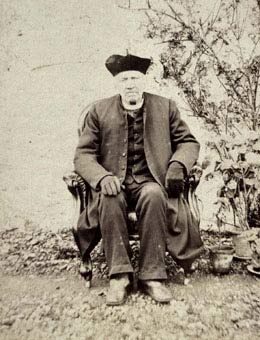
Bishop Bullseye
(1882-1901)
IN
TIME OF WAR
During the Great War of 1914 - 1918, Wenchoster was home to the
Royal Flying Corps (Dirigible Section) who were based at Baker's
Bottom, a large flat field to the south-west of the Cathedral Close.
Sunday Parade services were held for the duration, and several young
airship men were initiated into the ways of the inner sanctum by
becoming servers and candle snuffers. The arrival of a battalion of
French soldiers in late 1917 was at first greeted with suspicion,
but within the space of a few short months many had been shown
hospitality by the Chapter clergy. Such was their impact on the life
of the Close that in 1921 the famous memorial to their fallen
comrades was erected by the north door, where it still stands.
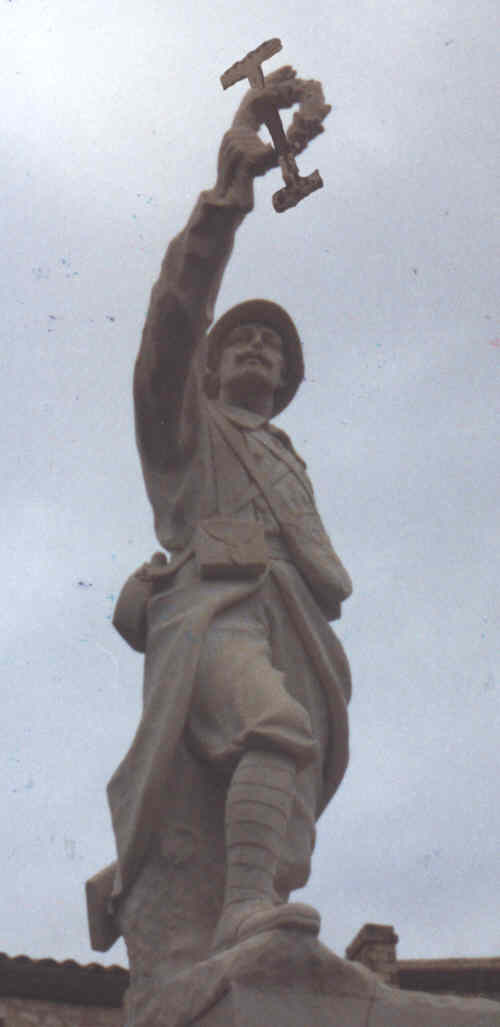
In the later
conflict of 1939 - 1945 Wenchoster escaped major bombing, though the
raid on the night of August 24th, 1941, is still
remembered by the older generation as being the time when war came
to the Wen. A lone German Heinkel, returning from an unsuccessful
attempt to bomb the prophylactic works at Fenny Dripton, some 15
miles to the north, decided to lighten his load over the city. A
mixture of high-explosive and incendiary devices rained down on the
southern suburbs, and for a time it seemed as if the cathedral might
succumb to the inferno, but valiant efforts by the Chapter clergy,
armed with wet purificators, doused the flames that were licking
along the base of the great West doors. The only damage was to the
Precentor's Vestry which received a direct hit from a rogue
incendiary. Thankfully the fire was put out by swift action from the
altar boys who carried the holy water from the cathedral font in
their leather trousers. Unfortunately the Cathedral's entire stock
of incense was lost, but the scent that lingered around the city for
the next four weeks more than made up for the enforced liturgical
barrenness of the Mass.
THE
MODERN CATHEDRAL & CANONRY
Today, the Close at Wenchoster
provides a sacred space amidst the bustling noise of our city.
Visitors may find within not only peace and quietness in which to
reflect, but also buildings which resonate with history and prayer.
The modern Canonry
has been the home of the senior Residentiary Canon of the Cathedral
since 1871, and is now equipped as a comfortable home and office,
with bar and meeting rooms for clergy, choir and visiting church
dignitaries. Regrettably it is not part of the Cathedral tour unless
special arrangements are first made.
The Diocesan
Retreat House based on the southern side of the cathedral Close
opened its doors in 1990. Each year it hosts the Annual
Retreat of the Society of Entrusted Vergers, the Annual Conference
of the Guild of Coffin Manufacturers and Handlers, and the Cathedral
Choir Summer School. It is available for hire and details may
be obtained through the Diocesan Office. Its extensive gardens allow
for peaceful meditation and solitude, and its croquet lawns often
echo to the cries of merriment as a ball or two hurtle into the
undergrowth.
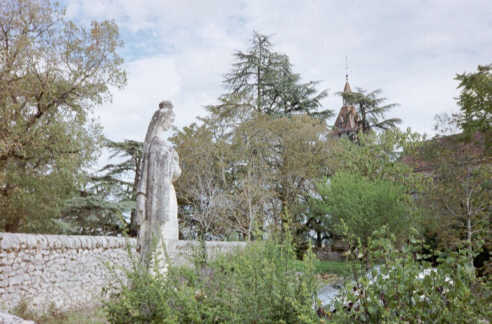
The Retreat
House gardens - a peaceful rendezvous for clergy
The cloisters,
which remain in regular use by the staff, the choir and, of course,
the public, house many items of interest. On the south side can be
found framed copies of medieval and later manuscripts, including the
Teachings of St. Valerie of Forchester to the Wen Folk (c.1444,) the
illustrated cathedral inventory of 1662 (which show no new
liturgical purchases,) and the recently-restored Grunters’ Bible
(c.1700) – a translation of scripture to evangelize the remote
farming settlements of the north of the county. Along the east and
west walks are many of the archaeological items discovered during
building works over the years, and now brought together for the
first time. Of particular interest are the shards of an early
pottery communion cup, fragments of the 14th century
monstrance, a leather bag containing morsels of a communion wafer
which have been carbon-dated to approximately the 10th
century, and a pair of 16th century undergarments upon which can be
seen the image of our Lord.
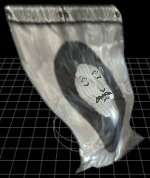
**********************************************************
NOTES
*(1) Thropping no longer exists. It disappeared after the course of
the River Wen was accidentally diverted in 1755. The name survives
in a number of ways. There is a Thropping Mews adjacent to the
Cathedral Close, a Thropping Arms in the High Street and one of the
Canons Emeriti is ceremonially entitled, "Thropping Magnus."
*(2) 1629-1655. He
never married.
*(3) Horace,
Suffragan Bishop of East Broadwench.
*******************************************************************
Visitors may want
to visit the Cathedral Book and Gift Shop in the north cloisters
where many souvenirs unique to our foundation may be purchased,
including paper napkins of the Mandylion.
Our modern,
split-level public conveniences with heated towels and assorted
vending machines are located next to the Refectory for the
convenience of those taking refreshment.

Return to main page
|